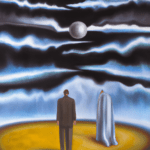Romance writing is all about creating tension and conflict between two characters before they finally come together in a satisfying way. This tension keeps the readers engaged and invested in the story, eagerly waiting to see how the characters overcome their obstacles and find their happy ending. But creating conflict in a romance novel can be a delicate balancing act. Too little conflict, and the story falls flat. Too much, and it becomes overwhelming and unrealistic. So how can you strike the right balance and create the perfect amount of tension to keep your readers hooked?
Tension in Romance Writing

- Create external obstacles One of the easiest and most effective ways to create conflict in romance writing is to give your characters external obstacles to overcome. This could be anything from a disapproving family member to a long-distance relationship or a professional rivalry. External obstacles create tension because they stand in the way of the characters’ happiness and force them to work hard to overcome them.
- Develop internal conflicts Internal conflicts are those that exist within the characters themselves. These could be fears, insecurities, or conflicting desires. Internal conflicts are particularly effective because they create tension and drama without necessarily requiring any external obstacles. They also allow you to delve deeper into your characters’ psyches and make them more complex and interesting.
- Use miscommunication Miscommunication is a classic trope in romance novels for a reason. It’s an effective way to create conflict and tension between characters, especially if it’s caused by a misunderstanding or a lack of information. By keeping your characters in the dark or having them misinterpret each other’s actions or words, you can create a sense of urgency and drama that keeps readers turning the pages.
- Introduce third parties Love triangles and other forms of romantic competition are a classic way to create conflict in a romance novel. By introducing a third party, you can create tension and drama as the characters vie for each other’s attention and affection. However, it’s important to be careful with this strategy, as it can quickly become cliché or contrived if not handled well.
- Create high stakes By raising the stakes of your story, you can create a sense of urgency and tension that keeps readers on the edge of their seats. This could be anything from a life-or-death situation to a high-stakes competition or a once-in-a-lifetime opportunity. By making the outcome of the story feel important and meaningful, you can create tension and conflict that will keep readers invested in the outcome.
- Play with power dynamics Power dynamics are a great way to create tension and conflict between characters. This could be anything from a boss-employee relationship to a wealthy and privileged character falling in love with someone from a lower social class. By playing with power dynamics, you can create tension and conflict as the characters navigate their different roles and try to find a way to be together.
- Use the past The characters’ past can be a powerful source of conflict in a romance novel. By giving your characters a complicated or traumatic history, you can create tension and drama as they struggle to move on and find happiness in the present. This can be particularly effective if their pasts are intertwined in some way or if they have conflicting feelings about a past relationship.
- Focus on character flaws Character flaws are an essential part of any well-rounded character, and they can also be a great source of conflict and tension in a romance novel. By giving your characters flaws that stand in the way of their happiness, you can create tension and conflict as they work to overcome them. This could be anything from a tendency to self-sabotage to a fear of commitment or a lack of trust.
- Create a ticking clock By setting a deadline or a time limit for your characters, you can create a sense of urgency and tension that keeps readers invested in the story. This could be anything from a deadline for a project or competition to a deadline for a relationship, such as a long-distance relationship with an expiration date. By giving your characters a limited amount of time to achieve their goals, you can create tension and conflict as they race against the clock to find their happy ending.
- Use unexpected plot twists Finally, unexpected plot twists are a great way to create tension and conflict in a romance novel. By throwing a curveball at your characters and your readers, you can create drama and suspense that keeps everyone guessing. This could be anything from a secret revealed at a critical moment to a sudden change in circumstances that throws the characters’ plans into disarray.
Of course, it’s important to remember that creating conflict in a romance novel is not about creating unnecessary drama or adding obstacles for the sake of it. The conflict should always serve the story and the characters, and should ultimately lead to a satisfying resolution that feels earned and authentic. By using these strategies in a thoughtful and deliberate way, you can create tension and conflict that keeps your readers engaged and invested in your story.
Creating conflict in romance writing is an essential part of keeping your readers engaged and invested in your story. By using a combination of external and internal obstacles, miscommunication, third parties, high stakes, power dynamics, character flaws, ticking clocks, and unexpected plot twists, you can create tension and conflict that drives the story forward and keeps readers on the edge of their seats. Just remember to always use these strategies in service of the story and the characters, and to ensure that the conflict ultimately leads to a satisfying and authentic resolution.
Keywords: romance writing, conflict, tension, external obstacles, internal conflicts, miscommunication, third parties, high stakes, power dynamics, character flaws, ticking clock, plot twists, romance writing conflict, conflict in romance writing, , romance writing tips, tips for romance writing, romance writing in fiction, romance writing tips for authors
Check out our Novel Writing Workbooks
Check out Little Tree Food Forest for articles on food forests and homesteading.
Check out FoodieScapes for articles on growing, fermenting and preserving food
Check out StoryScapes.World for articles on writing.
Subscribe to our newsletter to get information delivered to your inbox on how to write a book, outlining your novel, keeping journals, marketing your novel, self-publishing, writing poetry and more.










